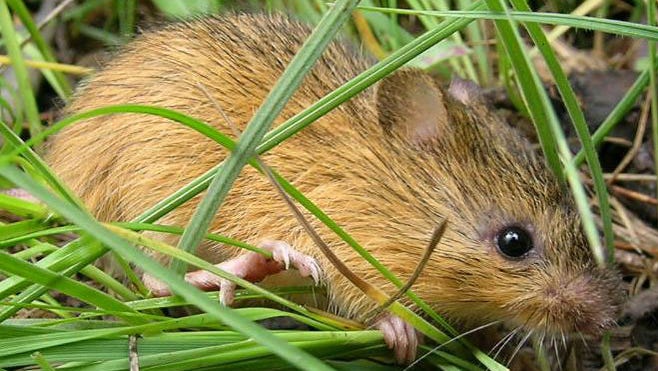
Renowned mating dances and rituals of the lesser prairie chicken observed for hundreds of years could continue for decades to come as the federal government proposed new protections for the bird native to the vast prairies of eastern New Mexico.
The U.S. Fish and Wildlife Service announced Wednesday the results of a 12-month study and proposals to list the bird for protection under the Endangered Species Act (ESA), identifying two distinct population segments (DPS) of the chicken.
The southern DPS, which lives among the shinnery oaks of eastern New Mexico and the southwest Texas panhandle, was proposed for an “endangered” listing, meaning it was at risk for extinction.
More:‘It’s our place to take care of them’: New Mexico landowners fight to save lesser prairie chicken
The northern DPS, encompassing areas of Colorado, Kansas, Oklahoma and Texas was proposed for a “threatened” listing, meaning the Service found that portion of the bird’s population was not yet in danger of extinction but that such a risk was imminent.
Under an endangered listing, practices that result in the killing of the bird such as urban development or energy production like oil and gas drilling could be prohibited in areas known as critical to lesser prairie chicken habitats.
The threatened designation was given exemptions in the proposal for routine agricultural practices and prescribed burns.
More:Follow live as group in eastern New Mexico fights to save lesser prairie chicken habitat
The Service held a press conference on Wednesday announcing its proposal for the listing, along with a 60-period when it would accept public comments along with two scheduled public hearings.
Throughout its five-state range, the lesser prairie chicken faces threats from habitat degradation, fragmentation and climate change.
The Fish and Wildlife Service estimated the species saw an up to 90 percent decline in its historic population, and Regional Director Amy Lueders with the Service based in Albuquerque said protecting the bird meant restoring native grasslands throughout the American West.
More:Federal judge orders rare New Mexico fish species could be listed as endangered
Its range-wide population was estimated at about 27,000 birds, records show, a significant decline from the hundreds of thousands or even millions of chickens that once roamed the grasslands.
“The loss of America’s native grasslands and prairies of the southern Great Plains has resulted in steep declines for the lesser prairie-chicken and other grassland birds,” Lueders said. “For more than two decades, the Service has supported and encouraged our partners’ voluntary efforts to conserve the lesser prairie-chicken.”
Clay Nichols, the Service’s lead biologist for the lesser prairie chicken, said declines in bird populations was expected to outpace ongoing conservation efforts, thus a listing could be needed.
More:Rio’s recovery: Endangered species listing for rare New Mexico fish
He said the bird’s reproduction is driven by precipitation, which can be especially problematic in the deserts of eastern New Mexico where widespread drought engulfed the region and its wildlife.
The southern DPS in New Mexico and Texas, Nichols said, could be as low as 1,000 birds.
“Habitat loss is projected to outpace conservation efforts to restore habitat. In this population we’ve seen resiliency negatively impacted by habitat loss and fragmentation,” he said “Overall, lesser prairie chickens in the southern DPS are projected to continue declines in population and resiliency.”
More:Rebuilding the river: Pecos River conservation projects awarded $1.5 million in grant funds.
Landowners urged to take action before listing enacted
Voluntarily conservation measures were taken throughout recent decades in the form of candidate conservation agreements with assurances (CCAAs) on non-federal land and candidate conservation agreements (CCAs) on federal acreage.
Both CCAAs and CCAs allow a landowner, like a rancher or energy company, to agree to conservation activities aimed at preserving the lesser prairie chicken in advance of and ESA listing.
In exchange, if a listing does occur as was proposed by the Service, landowners would not be subject to any additional restrictions or be required to enter consultation with the Service for their activities to continue.
Opinion:CCAs and CCAAs work. CEHMM programs make a difference for partners, species.
A CCAA grants the “assurance” that no additional restrictions will apply, while a CCA provides “a high degree” of certainty that no other federal requirements would be imposed but allows for such restrictions should they be needed on federal land.
The purpose of the agreements was to allow conservation and key industry continue to progress side-by-side.
“There are a variety of mechanism already in place covering some space down there that give landowners and energy companies coverage from the ESA,” Nichols said. “In general, what we continue to encourage in this process is continued participation in these voluntary efforts. “
A final listing decision could come in 12 months from when the proposal is listed in the federal register, and Emily Wirth, executive director at Carlsbad-based conservation organization CEHMM or the Center for Excellence, advised any landowner that could be impacted by the listing to enroll in a CCAA or CCA.
More:Jaguars could be reintroduced in New Mexico as conservationists fight to save the cat
After a listing is implemented, the agreements are no longer available and any landowner not enrolled could see their activities delayed, Wirth said.
“We still have time to enroll people. As long as they enroll, they are good to go. They are able to continue their work on the ground without needing any additional consultation,” she said. “That’s what we’re here for. To keep industry going and conservation going.”
CEHMM has an office in Milnesand, a village near Portales where the lesser prairie chicken is known to congregate in breeding grounds known as “leks,” and Wirth said the group can enroll any landowners that could be impacted throughout New Mexico.
More:A butterfly’s last stand: Federal listing sought for rare species in Sacramento Mountains
She said for conservation efforts to be successful, they must be developed through collaboration with government agencies, landowners and industry.
“That’s the only way in my mind that conservation works. We brought industry, private landowners together,” she said. “That cooperative conservation, bringing in all those who would be affected is the only way to implement conservation. You can’t do it without everyone at the table.”
As part of the agreements, CEHMM assists in clearing invasive mesquite bushes, abandoned windmills and other tall structures, which the chicken avoids, from enrolled acreage.
More:Yellow-billed cuckoo gains habitat protections in New Mexico, other states in Western U.S.
The group can also put up new fencing to help ranchers with grazing to avoid overgrazing in certain areas that could impact chicken habitats.
“The idea is to create new habitat for the chicken. To do that, we go in as part of those programs,” Wirth said. “It’s one of the benefits to ranchers enrolled in the program. It opens up the grasslands to repopulate and it creates more habitat.”
In a statement from the New Mexico Oil and Gas Association, a trade group representing fossil fuel companies throughout the state, the Association argued these ongoing voluntarily efforts to preserve the chicken were sufficient.
NMOGA contended a federal listing would “undermine” progress and disrupt energy development – a major driver of New Mexico’s economy that is mostly situated in the Permian Basin in the southeast corner of the state where prairie chicken habitats are located.
“The proposal to list the lesser prairie-chicken discards years of valuable progress with voluntary programs that have proven to be successful in conserving the species across southeastern New Mexico,” the statement read.
“Oil and gas operators are committed to leading habitat management and conservation practices, and have invested significant resources and enrolled in conservation agreements to protect the species and avoid habitat disruption.”
On May 21, a group of U.S. Senate Republicans penned a letter to U.S. Interior Secretary Deb Haaland opposing the listing, calling the action “premature” and touting public-private partnerships enacted to protect the chicken.
“We have long been supportive of the voluntary public-private conservation partnerships for the lesser prairie chicken and its habitat,” the letter read. “These efforts have yielded significant private and public investment dramatically increasing its population growth.
“Instead, the Service should recognize, respect, and reward the private sector for their conservation efforts.”
Adrian Hedden can be reached at 575-618-7631, achedden@currentargus.com or @AdrianHedden on Twitter.







